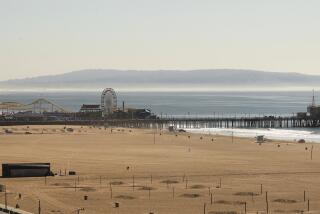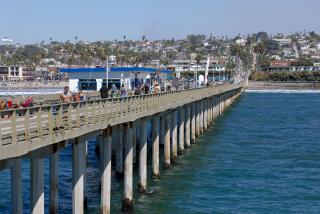Estimates for Towing Queen Mary to Japan Reach $12 Million
- Share via
Upping the ante on the proposed trip of the Queen Mary to Japan, a new analysis by the Long Beach city manager’s office showed Tuesday that it could cost as much as $12 million to tow the famed ship to Tokyo Bay.
And that’s a one-way estimate. It is uncertain how much it would cost to bring it back.
The analysis does not even address repairs to air conditioning, electrical and plumbing systems and other problems that the ship’s operator contends need attention--costs that could be as high as $40 million.
The analysis stems from a request by the ship’s operator, Joseph Prevratil, to take the ship to Japan for three to five years to raise money for repairs.
Skeptical City Council members asked for the analysis because of fears that the ship would never survive the journey.
Drafted by Assistant City Manager Henry Taboada, the city study conflicts with previous estimates by Prevratil, who said it would cost about $5 million to tow the ship to Japan.
Taboada said the $5-million estimate was on the low side. He said the cost “could be as much as $12 million if everything had to be done.”
The city report is the first independent analysis of what it could cost to move the Queen Mary. Included in the report are conclusions from an updated engineering report commissioned by Prevratil that says it is feasible to tow the ship to Japan “but only after extensive structural repairs.”
Prevratil said Tuesday that the chief difference between his previous estimate and the new ones is over the projected costs of repairing the ship if it must be put in dry dock. He said it still hasn’t been determined whether that will be required.
“The report reinforces my position that it is feasible to move the Queen Mary to Japan,” he said. “We always knew that there would be an expense connected with it.”
One difficulty is that the ship, launched in 1936, is so old that finding crews with enough experience to repair it poses a problem.
Considered the “Queen of the Seas” when it was launched, the Queen Mary was constructed with sheets of steel riveted together, rather than welded, as is the case in modern shipbuilding.
“The riveted construction will result in leakage during the trip because of movement around the deteriorating rivets and dislodgement of corrosion and sealant,” the report to the City Council said, paraphrasing the engineering study by MCA Engineers of Costa Mesa.
“A very large and expensive bilge pumping system” would ensure the ship’s stability, the report said. But finding knowledgeable shipyard workers would be more problematic.
As for the major costs, the report said welding rivets below the waterline could cost $2 million and the actual towing could cost $1 million, with an additional $2 million for insurance. Putting the ship in dry dock for painting and other repairs, if necessary, could add $4.5 million to the cost.
Various tests, including an environmental impact study that could take up to six months, would add $1.2 million in costs and might turn up additional problems.
The city report contained concerns raised by Raymond Bingham, described as an authority on old ships, that the skin of the Queen Mary is made of “brittle British steel” that has aged and might not be up to the stress of strong ocean currents and waves. Bingham said the Queen Mary, more than 60 years old, is already three times past its useful life, according to the report.
More to Read
Sign up for Essential California
The most important California stories and recommendations in your inbox every morning.
You may occasionally receive promotional content from the Los Angeles Times.













